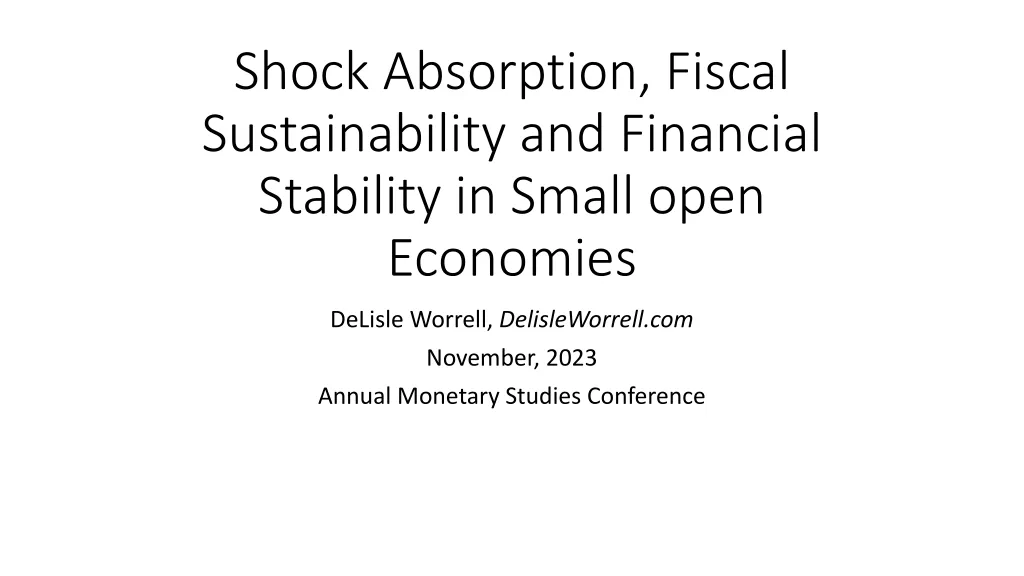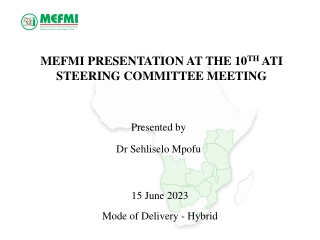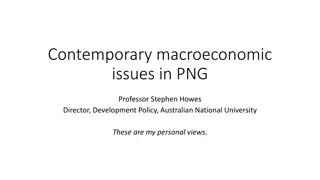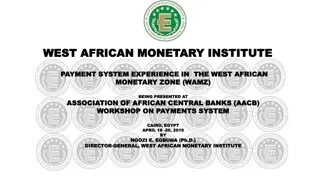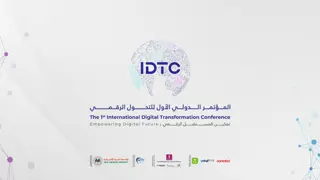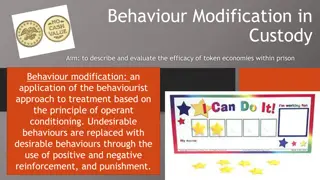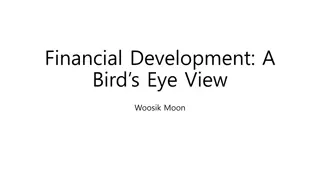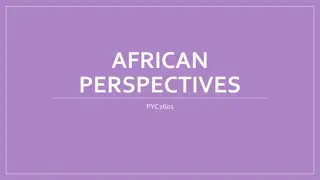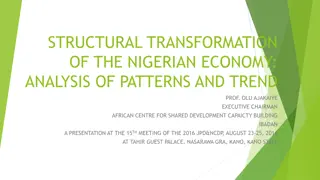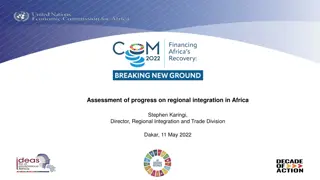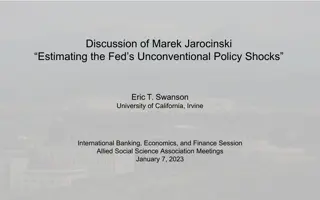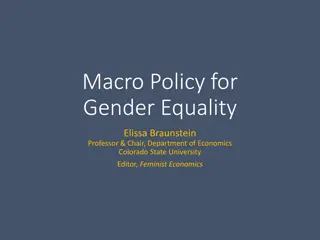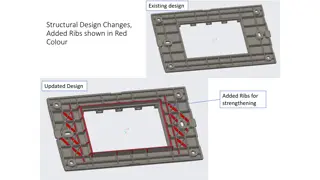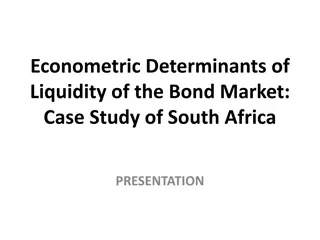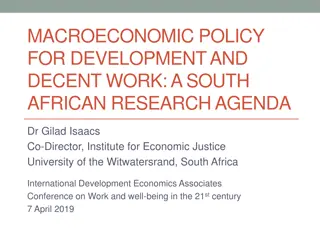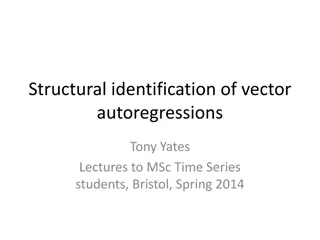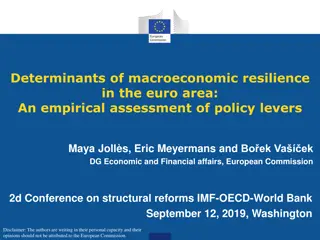Macroeconomic Policy Framework for Structural Transformation of African Economies
Structural transformation is essential for the development of African economies, involving shifts towards higher productive activities and inclusive growth. The process requires purposeful efforts to create articulated economies with coordinated economic activities and positive externalities. Emphasis is placed on diversification, regional integration, enhancing markets, and attracting investments for sustainable development.
Download Presentation

Please find below an Image/Link to download the presentation.
The content on the website is provided AS IS for your information and personal use only. It may not be sold, licensed, or shared on other websites without obtaining consent from the author.If you encounter any issues during the download, it is possible that the publisher has removed the file from their server.
You are allowed to download the files provided on this website for personal or commercial use, subject to the condition that they are used lawfully. All files are the property of their respective owners.
The content on the website is provided AS IS for your information and personal use only. It may not be sold, licensed, or shared on other websites without obtaining consent from the author.
E N D
Presentation Transcript
Macroeconomic Policy Framework for Structural Transformation of African Economies Machiko Nissanke Policy Dialogue Africa and Latin America at a Crossroads: Addressing Structural Transformation In the New Global Landscape At UNECA, Addis Ababa, 10 December 2015
Structural Transformation as Development Processes: Track Records Structural transformation (ST) - not just change in terms of shifts in sectorial composition among primary, secondary and tertiary activities. Moving to higher productive activities within each sector as well as inter- sectoral reallocation of resources ( structural-change) , Growth- and Productivity- Enhancing structural changes require reallocation of resources from low-productivity activities to high- productivity ones across and within sectors In both Africa and LA, productivity-reducing structural change took place in 1990-2005, in contrast to productivity-enhancing change in East Asia Labour moving to services with fragile activities of less growth in MPL, resulting in dynamic losses and prevalence of informal activities Integration into the global economy per se does not guarantee growth dynamics and productivity-enhancing ST Both regions remained largely resource based economies with high vulnerabilities to external shocks 2 Nissanke OECD-UNECA December2015
Structural Transformation as development processes of creating articulated economies Structural Transformation (ST) as purposeful, concerted societal efforts towards creating a well-articulated economic structure, where economic activities are closely linked to each other in a dynamic, coordinated manner. Diversification into higher productive activities with large positive externalities and dense dynamic spill-overs spatially and overtime ST should entail creating inclusive growth ex-ante: inclusive growth through which opportunities are created, and benefits are widely shard ex-ante Achieving twin objectives of economic and social transformation Creation of articulated economies through regional Integration (RI) to overcome small market sizes and economies Forward-looking position to take advantage of demographic dividends as important productive assets and expanding purchasing power/aggregate demand Focus on enhancing markets in the region/continent by in effective demand on the basis of growing per-capita income and consumption 3 Nissanke OECD-UNECA December2015
Structural Transformation as processes of creating articulated economies Comparative advantages and competitiveness should not be built on the basis of impoverished wage labour and their under-consumption ST should entail active learning-by-doing at production units and society level, leading to shifting dynamic comparative advantages in integration into the global economy ST involves exploiting dynamic economies of scale and agglomeration effects for enhancing positive externalities through cross-border production clustering, dense production/supply networks and consumption spill-overs Cumulative causation effects of integrated markets could set in a virtuous circle in the investment-growth nexus by attracting both vertical and horizontal FDI for large integrated markets market seeking FDI Attract FDI for technology and knowledge acquisition to enhance skill base, knowledge assets, productive human capital (in place of resource seeking or foot loose FDI on exploitation of cheap labour) 4 Nissanke OECD-UNECA December2015
Structural Transformation as developing processes of creating articulated economies Active and strategic participation in technology-driven globalisation, and leap-frogging to clean green and mobile technology with smaller sunk costs investing in agriculture for agrarian transformation with linkage developments and increased non-farm employment and food security Spatial spread/diversification with new clean technology- to prevent negative externalities (congestion, asset price escalation, pollution, crimes etc.) from developing in over crowded cities Building Blocks Investing in human resources for capability development Investing in economic and social Infrastructures Institutional transformation: Creating institutional configuration for productive private-public coalition Domestic stakeholders - SMEs and small holders as main drivers/ developing agents with their capability development 5 Nissanke OECD-UNECA December2015
Fig.1. Structural Transformation as Development Processes in the 21st Century 6 Nissanke OECD-UNECA December2015
Fig. 2. Historical Evolution: Policy Framework, Institutional Configuration and Outcome 7 Nissanke OECD-UNECA December2015
Fig.3 Macroeconomic Policy Framework embedded in Development Planning for Structural Transformation 8 Nissanke OECD-UNECA December2015
Macro Economic Policy framework: Achieving Twin Objectives in a dynamic setting Macroeconomic Policies (MPs) for ST: Pro-investment and pro- development with a view to ensuring a positive feedback loop in the investment-growth nexus and engendering an inclusive development path MPs should be embedded in national/regional strategic planning for building strong nation states in regional/continental coordination Coordination and coherence with other policies in a dynamic setting in a system of endogenously evolved institutions There are multi-layer feedback loops in the institutions-policies- development nexus- MPs could facilitate building an institutional configuration for a developmental nation-state MPs could be instrumental in laying an institutional foundation for structural transformation by fostering productive private-public interface Twin Objectives (stabilisation and developmental) should be pursued by navigating between the two in presence of long-run complementarity but short-run trade-off with an anchor in development plans on a rolling basis 9 Nissanke OECD-UNECA December2015
Overarching Agenda in Macroeconomic Framework 1. Scaling up Public Investment and Public Goods Provision a surge in public investment in all productive assets (physical, social and human assets) economy-, region- and continent-wide in order to entice private investments in a self-sustained basis. Physical and soft (social) infrastructures are public goods scaling up- be made in light of fiscal sustainability and an economy s growing absorptive capacity by reaping returns from productive investments over time 2. Coordinating investment with other policies public investment be made selectively, sequenced purposely towards achieving the highest social and societal returns through maximising positive externality Coordination with trade, investment and technology policies, financial sector policies, oversight regulatory and competition policies, social policy, education and health policies, and sector- specific policies such as industrial or agricultural policies. 10 Nissanke OECD-UNECA December2015
Overarching Agenda in Macroeconomic Framework 3. Maintaining Macro stability for enticing and sustaining private investment Private agents are strategic actors and partners in ST Unstable macroeconomic conditions generate high uncertainty and risks, and prevent private agents from making forward-looking productive investments. harsh fiscal retrenchment and overly restrictive monetary policy, aimed at attaining the stabilisation objective only, is not capable to the transformation agenda forward tread carefully the short-run trade-off between growth and stabilisation objectives by a coordinated applications of policy instruments 4. Mobilising resources and reducing aid dependence develop financial institutions (banking and non-banking) and deepen financial markets and widening financial services Seek innovative financing sources- diaspora bonds, remittances, private equity, impact financing etc.. Be aware of volatile natures of cross-border portfolio flows Address banks excess liquidity holding in low-risk assets coupled with credit rationing to SMEs and small holders Seek appropriate financial mechanisms for enhancing technology capability and productivity of SMEs and small holders Overcome aid-dependence syndrome over time by tackling illicit financial flows and building a robust tax system. 11 Nissanke OECD-UNECA December2015
Overarching Agenda in Macroeconomic Framework (Cont d) 5. Securing fiscal sustainability by establishing fiscal legitimacy through institutional transformation Securing fiscal sustainability takes primacy in attaining both developmental and stabilisation objectives. developing the capacity of prudent and efficient public finance management An institutional configuration for building a strong coalition between the government and domestic stakeholders/actors- esp. SMEs and small holders Establishing fiscal legitimacy on the basis of strategic public- private interplays through creating a virtuous circle in the taxation - public goods provision nexus Scaling up of public investments and public goods provision requires a consolidation of tax revenues on a stable basis Government should be accountable to stakeholders and serve their collective interests institutional transformation towards building a developmental nation- state 12 Nissanke OECD-UNECA December2015
Fiscal, Monetary and Financial Policies for Structural Transformation Fiscal Policies Institutional perspective of fiscal sustainability Broadening revenue bases with high quality public goods provision Enhancing Tax Revenues through Improved Governance over Cross- Border Financial Flows and Public Resource Management Changing Africa s Revealed Comparative Advantages by Turning Natural Resource Wealth into Productive Assets through Pro-Poor Fiscal Expenditures Sustainable management of public finance and sovereign debt Monetary and Financial Polices Reappraisal of Contemporary Discussions on Monetary Policy Regime Positioning in a Space of Macroeconomic Policy Trilemma: an Integrated Approach to monetary policy, exchange rate policy and capital flow management Mobilising Resources for Structural Transformation through Financial Sector Development 13 Nissanke OECD-UNECA December2015


